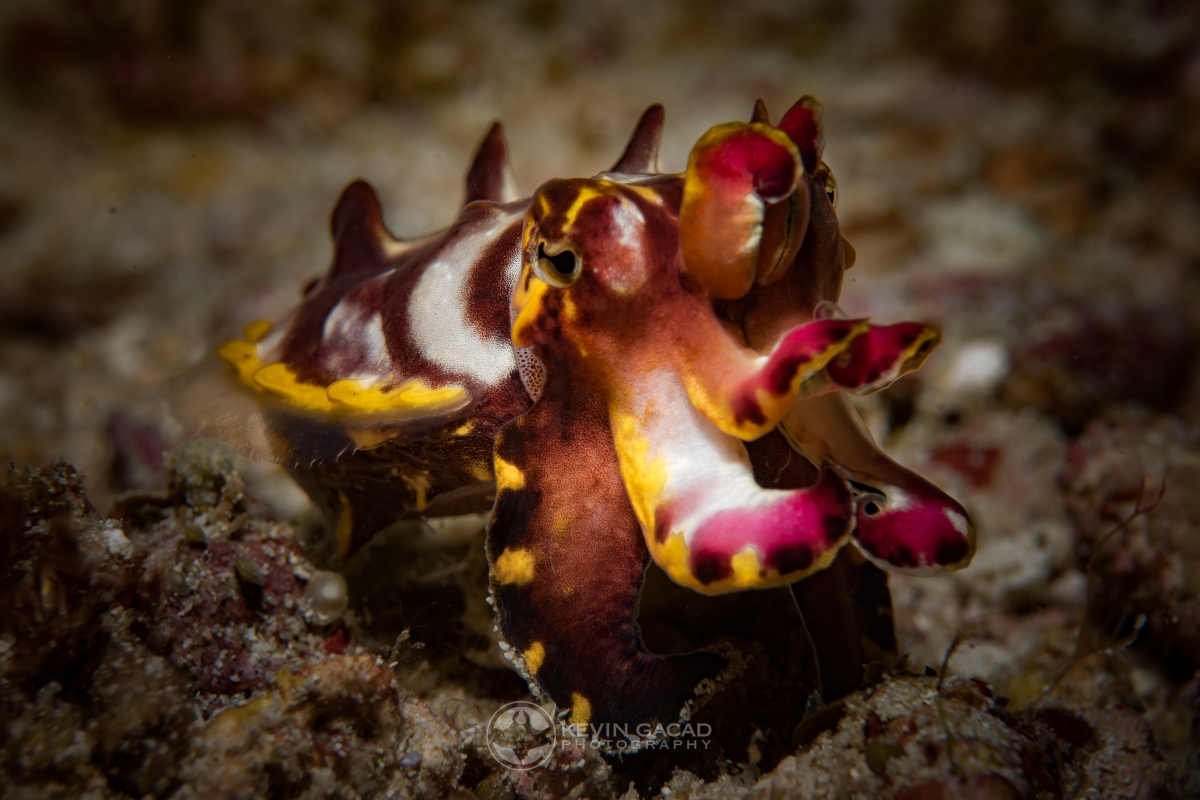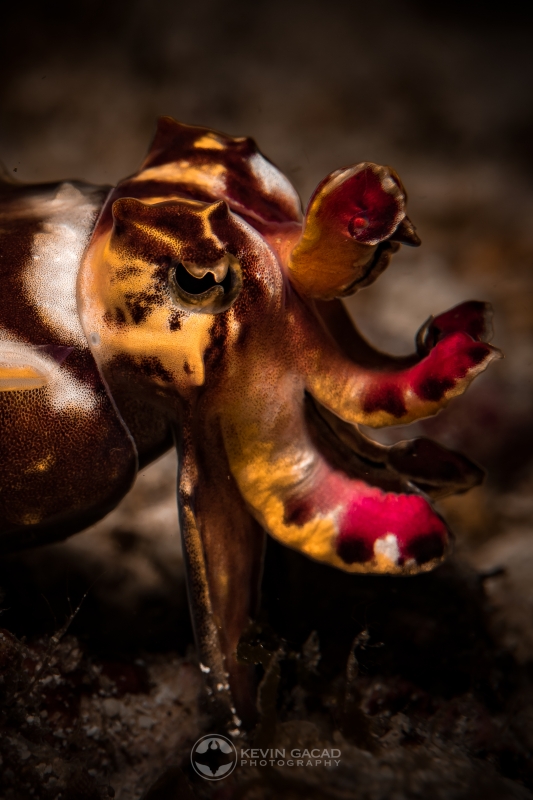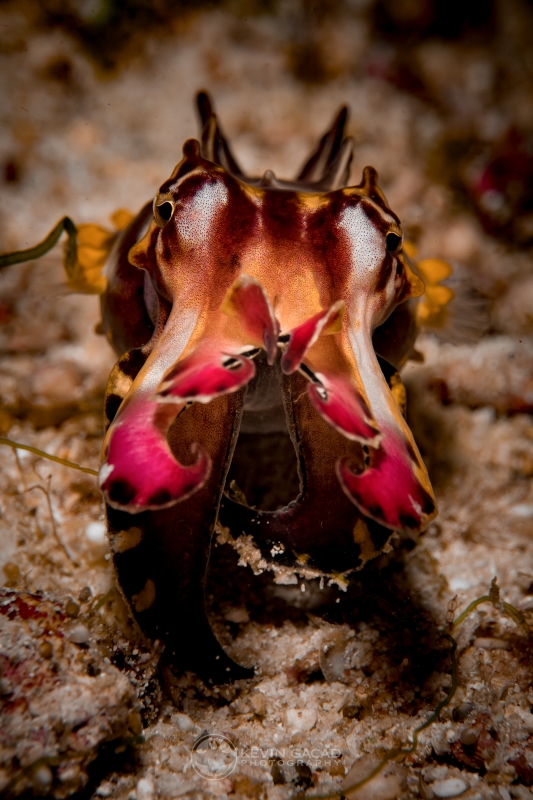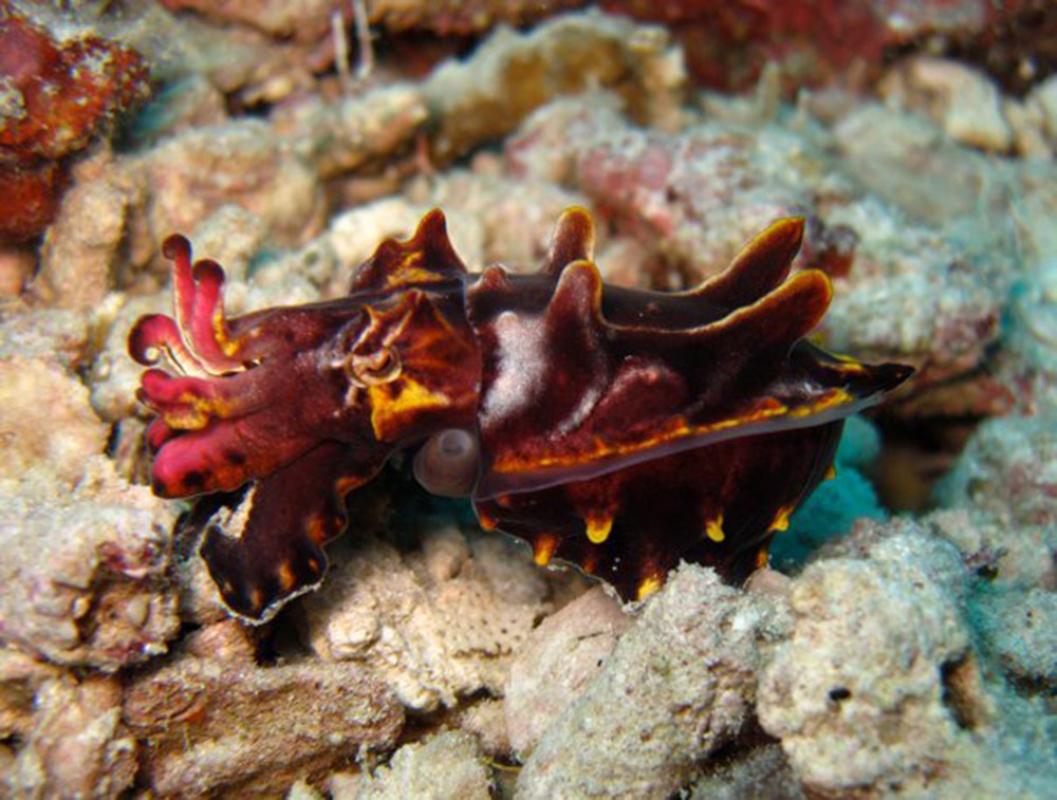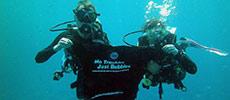Flambouyant Cuttlefish
Flambouyant Cuttlefish (Metasepia pfefferi) is the Holy Grail for many macro-loving divers. It's a truly special species of cephalapod that is extremely hard to find but wonderful when found. It's found around Asutralia and the Coral Triangle. Its small size and wonderful colouration make it special, as well as being so rare.
|
Flambouyant Cuttlefish Metasepia pfefferi
|
|
|---|---|
| Scientific Rank | |
| Kingdom: | Animalia |
| Phylum: |
Mollusca (Mollusks / Molluscs)
|
| Class: |
Cephalopoda
|
| Order: | Sepiida (Cuttlefish) |
| Family: | Sepiidae (Sepiidae) |
| Genus: | Metasepia (Metasepia) |
| Species: | Metasepia pfefferi |
| Size | |
| Average Size: | 7 centimetres |
Main Diving Locations:
The Flamboyant Cuttlefish is native to the tropical Indo-Pacific waters. Divers can spot them off the coasts of northern Australia, southern New Guinea, and numerous islands of the Philippines, Indonesia, and Malaysia. Their range extends from Mandurah in Western Australia, northeastward to Moreton Bay in southern Queensland, and across the Arafura Sea to the southern coast of New Guinea. They are also common in the Visayas region of the Philippines and have been recorded in Sulawesi and the Maluku Islands in Indonesia, as well as the Malaysian islands of Mabul and Sipadan.
Behaviour:
This species thrives in sand and mud substrates in shallow waters, typically at depths of 3 to 86 meters. Active during the day, they exhibit a remarkable hunting behavior, employing complex and varied camouflage techniques to stalk their prey.
Diet:
The Flamboyant Cuttlefish feeds on fish and crustaceans, demonstrating a fascinating hunting approach that combines stealth and cunning.
Colors and Physical Characteristics:
The Flamboyant Cuttlefish is known for its dynamic coloration. The base color is generally dark brown, but when disturbed or attacked, it quickly changes to a pattern of black, dark brown, and white, with striking yellow patches around the mantle, arms, and eyes. The arm tips often display a bright red coloration, signaling a warning to potential predators. This species uses its lower arms to walk or "amble" along the sea floor, rhythmically waving its protective membranes in a display of its poisonous nature, as its flesh contains a unique toxin.
Size:
Most sources agree that this species grows to about 8 cm (3.1 in) in mantle length, although some reports suggest a maximum length of 6 cm (2.4 in). The dorsal surface of the mantle features three pairs of large, flat, flap-like papillae, which are also present over the eyes.
In summary, the Flamboyant Cuttlefish offers a kaleidoscope of colors and an impressive display of hunting and defense mechanisms, making it a fascinating subject for divers and marine biologists alike.
